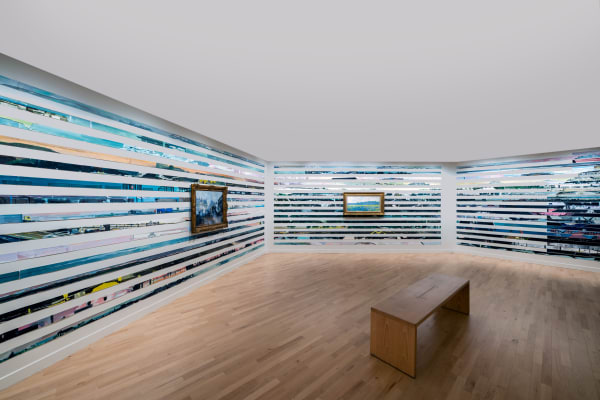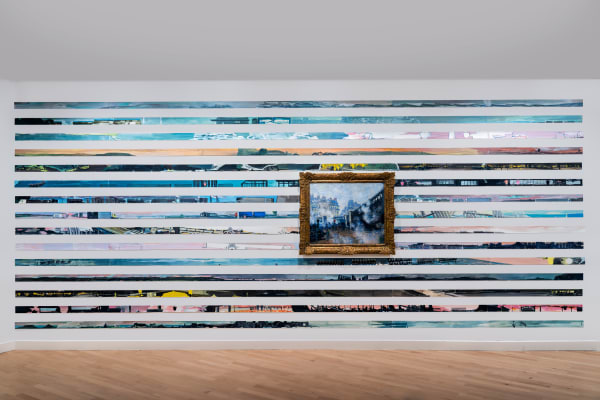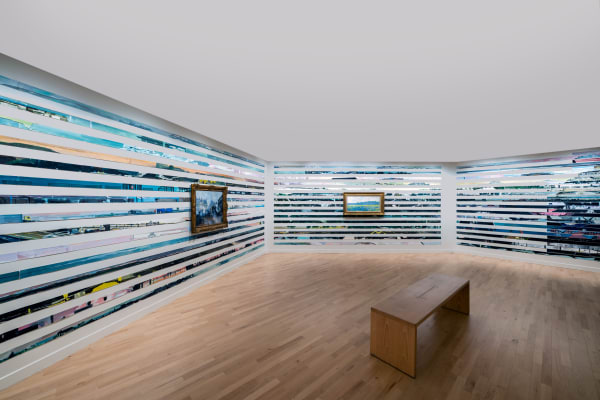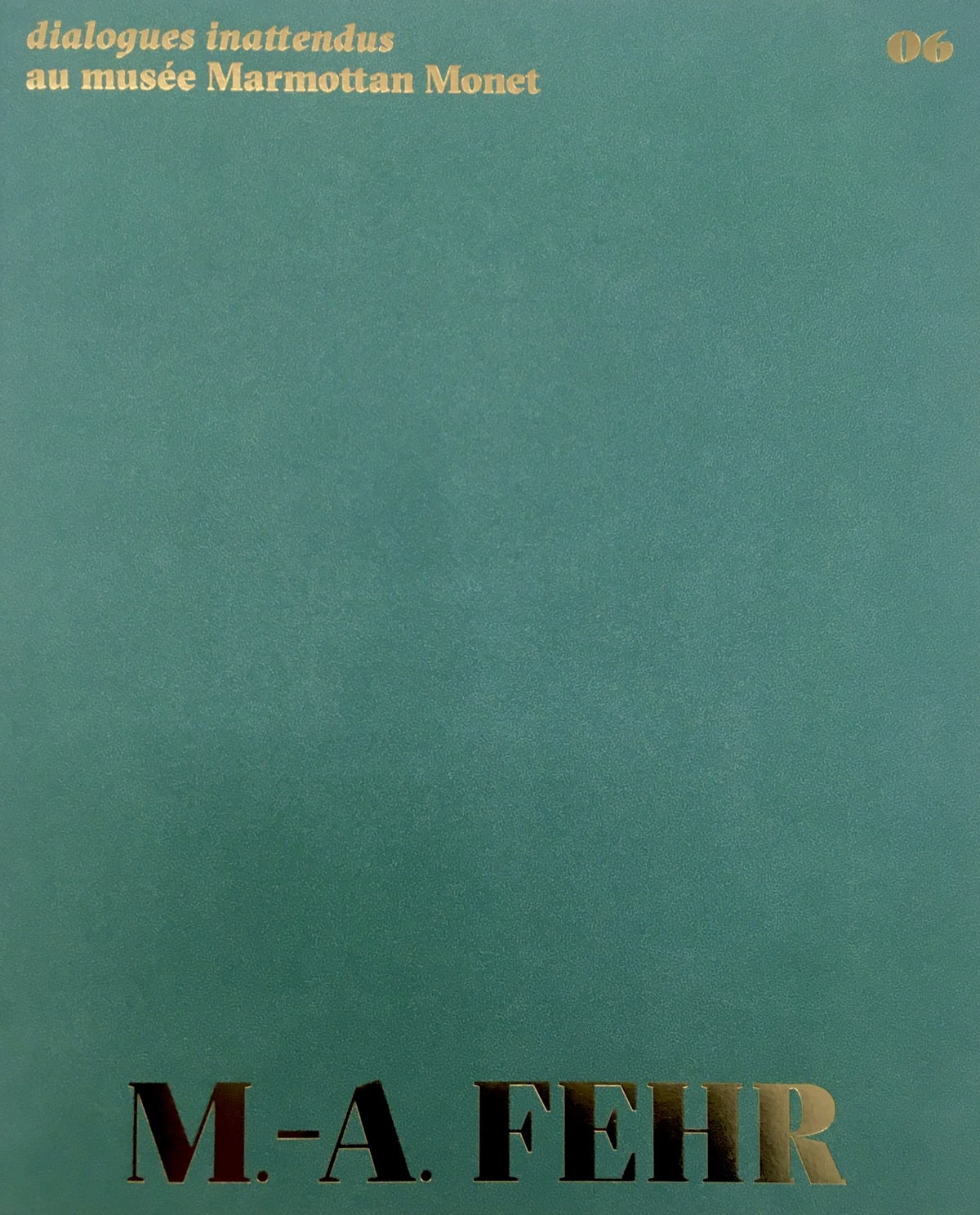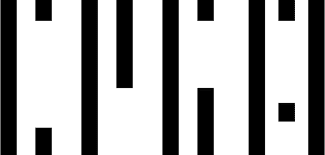Invited by the Musée Marmottan Monet to establish an artistic dialogue with its collections, the Swiss painter Marc-Antoine Fehr has taken two paintings by Claude Monet as his starting point: Le Pont de l’Europe, Gare Saint Lazare (1877) and Champs d’Iris jaunes à Giverny (1887).
Marc-Antoine Fehr focuses on the narrative potential of these paintings, made possible by the instantaneity of Monet’s vision as he captured these transient scenes, which he painted from life. Playing with this effect, he presents a set of 240 gouaches on three walls of the exhibition space, each measuring 7.5 x 101 cm, with Monet’s two paintings superimposed on them. Begun in 1999 and appropriately titled Le Pays sans fin (Country Without End), this work, which is carried out anew in each venue, is intended to be continued with no scheduled end.
The artist takes visitors on a journey starting at the Gare Saint Lazare, destination unknown. The landscape rushes by, seen through the train window. Like a traveller who only captures a continuous fragment of what he sees, the visitor is unable to take in the entire artwork in one go. Le Pays sans fin invites us to journey physically and visually through the colours of the painting, catching fleeting glimpses of outlines, deserted buildings and silent natural environments.
This site-specific artwork plays with our sense of scale. The character from La Grande Parade (2022) seems to have detached himself from the gouaches where he was born and is now seen in monumental format. This child, whose outline seems unsure whether to appear or disappear, summarises Marc-Antoine Fehr’s artistic practice: starting with a reality—an object, a place, a photograph taken by the artist—he takes us into a dream that the painting makes tangible.
Curator: Érik Desmazières, Director of Musée Marmottan Monet

